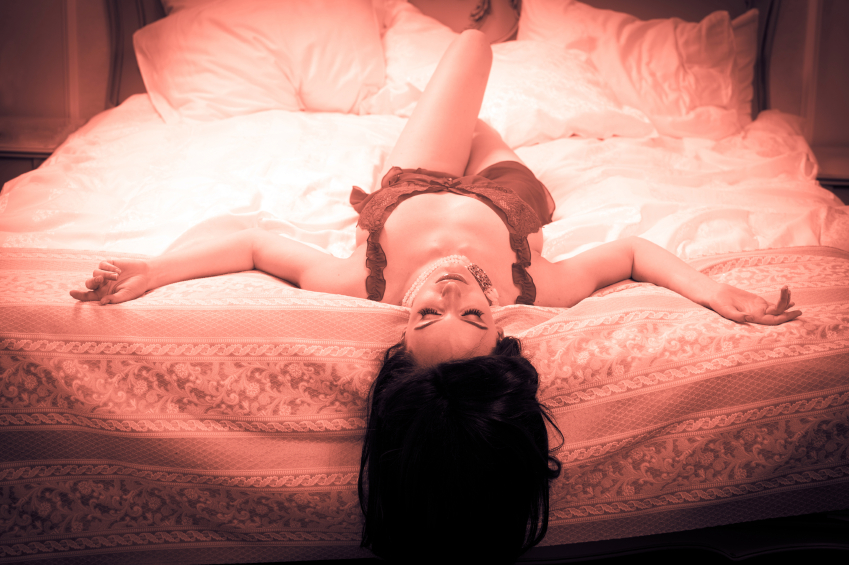Women Have More Sexual Fantasies When They’re Ovulating
January 29, 2014 by Justin Lehmiller

Several studies have found changes in women’s sexual attitudes and behaviors during ovulation. For example, research suggests that ovulating women opt for sexier and more revealing clothing [1] and move their bodies in ways that are deemed more attractive by men [2]. Such findings could help to explain why female exotic dancers tend to earn bigger tips during this phase of the menstrual cycle. Other research has found that ovulation changes the characteristics heterosexual women find attractive in men. Building upon all of these results, a recent study suggests that ovulation also appears to change how often women think about sex, as well as the content of their sexual fantasies [3].
Twenty-seven heterosexual women completed an online diary every day for one month. Each day, these women were asked to describe the number of sexual fantasies they had during the previous day and report on the content of those fantasies. All of the women were aged 18-30 and were not currently in a long-term relationship. In addition, none of the women were using any form of hormonal contraception (i.e., they were naturally cycling). A urine test was used in order to confirm exactly when each of the women was ovulating during the course of the study.
Overall, women reported having the most sexual fantasies while they were ovulating. Women also reported that they found these fantasies to be more sexually arousing than the fantasies they had during other phases of the menstrual cycle. But not only did the frequency of their fantasies change—so did the content.
Specifically, fantasies around ovulation were more likely to feature men. However, this doesn’t mean that the fantasies became more sexual. In fact, during ovulation, the sexual content of women’s fantasies actually decreased while the emotional content increased.
In short, ovulation appears to increase how often women have sex on the brain; however, while the sheer number of sexual fantasies increases during ovulation, these fantasies actually appear to be less focused on the sex act itself.
Want to learn more about Sex and Psychology? Click here for previous articles or follow the blog on Facebook (facebook.com/psychologyofsex), Twitter (@JustinLehmiller), or Reddit (reddit.com/r/psychologyofsex) to receive updates. You can also follow Dr. Lehmiller on YouTube and Instagram.
[1] Haselton, M. G., Mortezaie, M., Pillsworth, E. G., Bleske-Rechek, A., & Frederick, D. A. (2007). Ovulatory shifts in human female ornamentation: Near ovulation, women dress to impress. Hormones and Behavior, 51, 40-45. doi: 10.1016/.yhbeh.2006.07.007
[2] Fink, B., Hugill, N., & Lange, B.P. (2012). Women’s body movements are a potential cue to ovulation. Personality and Individual Differences, 53, 759-763. {C}{C}
[3] Dawson, S. J., Suschinsky, K. D., & Lalumiere, M. L. (2012). Sexual fantasies and viewing times across the menstrual cycle: A diary study. Archives of Sexual Behavior, 41, 173-183. doi: 10.1007/s10508-012-9939-1
Image Source: iStockphoto
You Might Also Like:

Dr. Justin Lehmiller
Founder & Owner of Sex and PsychologyDr. Justin Lehmiller is a social psychologist and Research Fellow at The Kinsey Institute. He runs the Sex and Psychology blog and podcast and is author of the popular book Tell Me What You Want. Dr. Lehmiller is an award-winning educator, and a prolific researcher who has published more than 50 academic works.
Read full bio >

